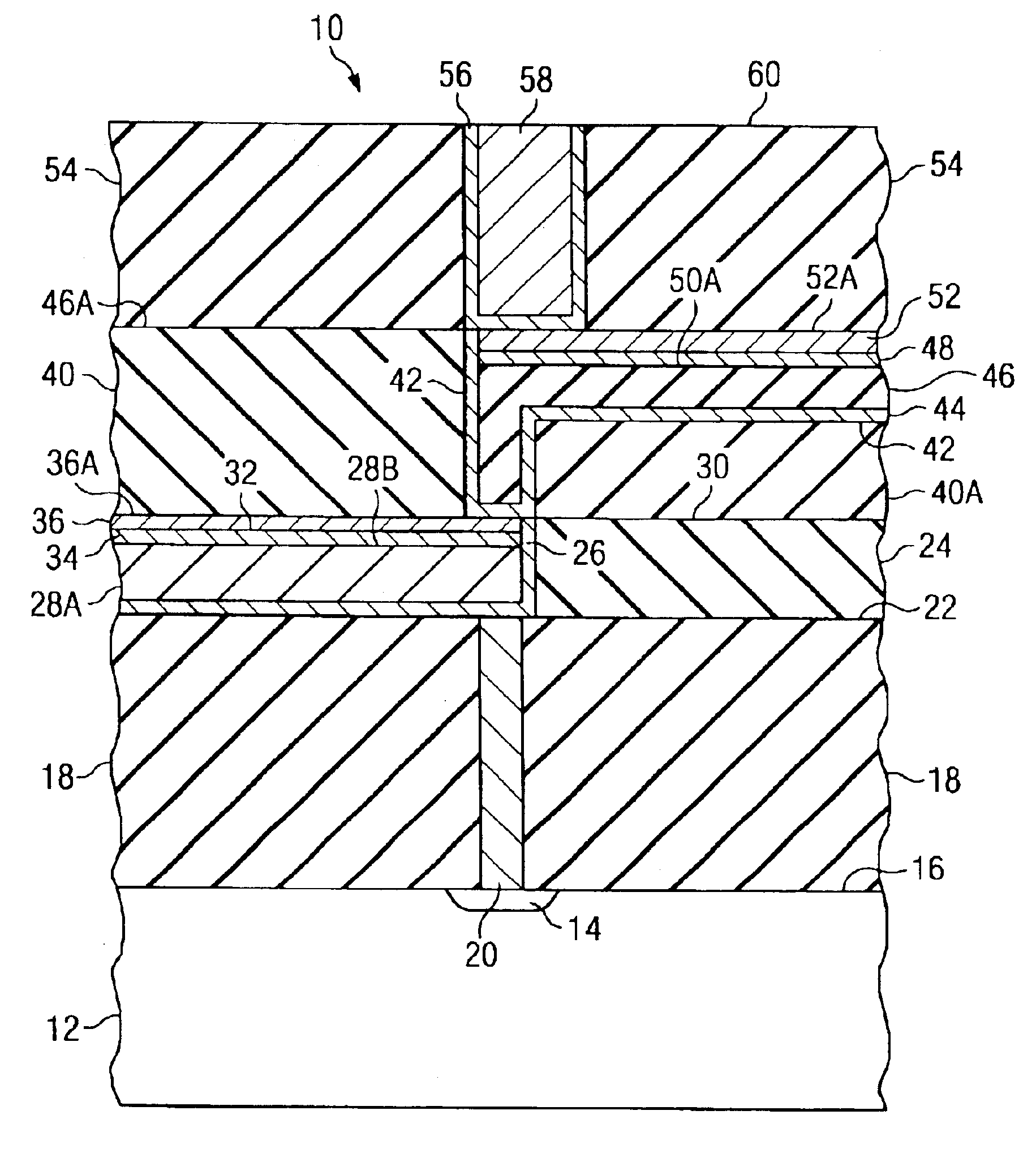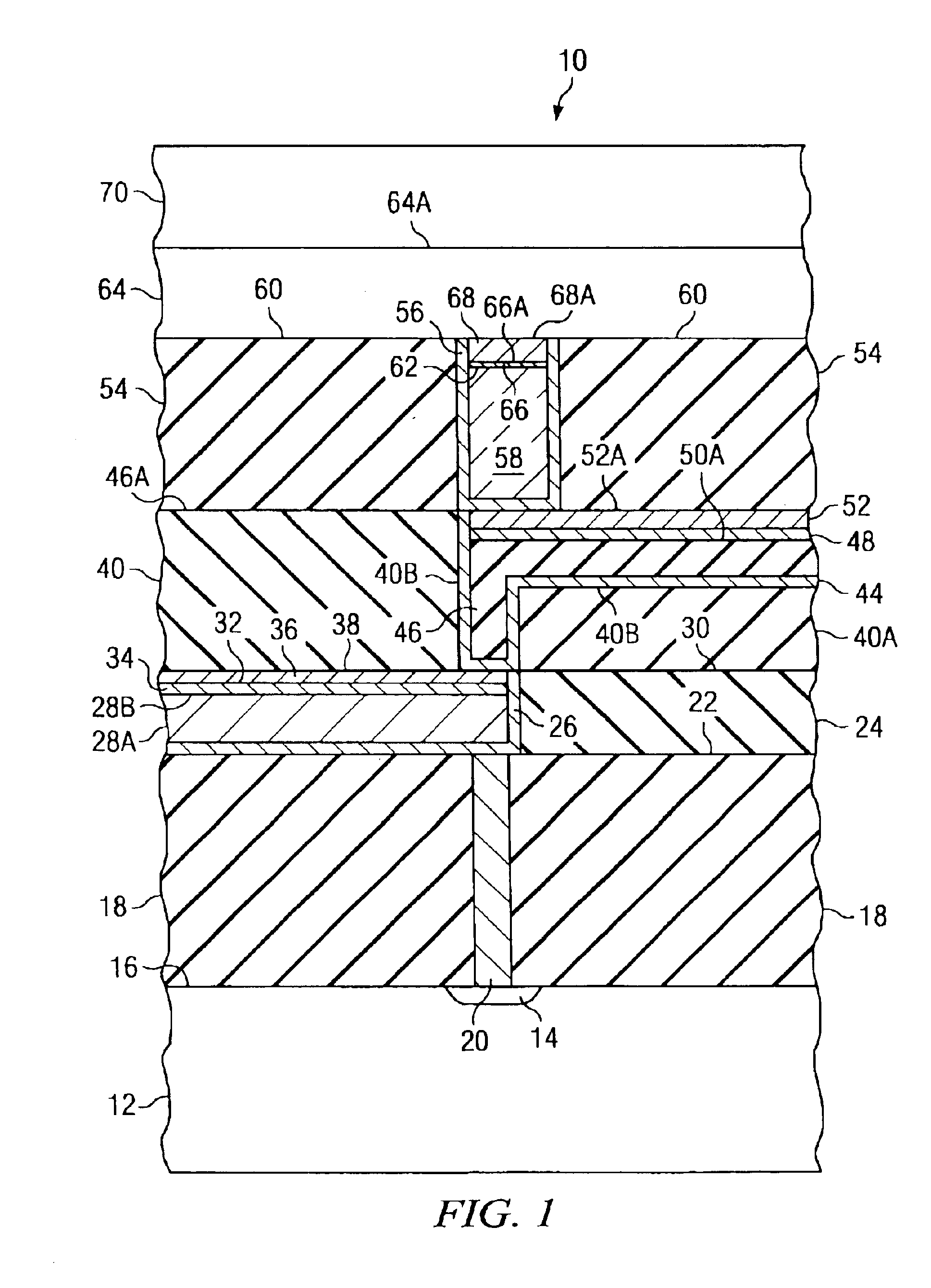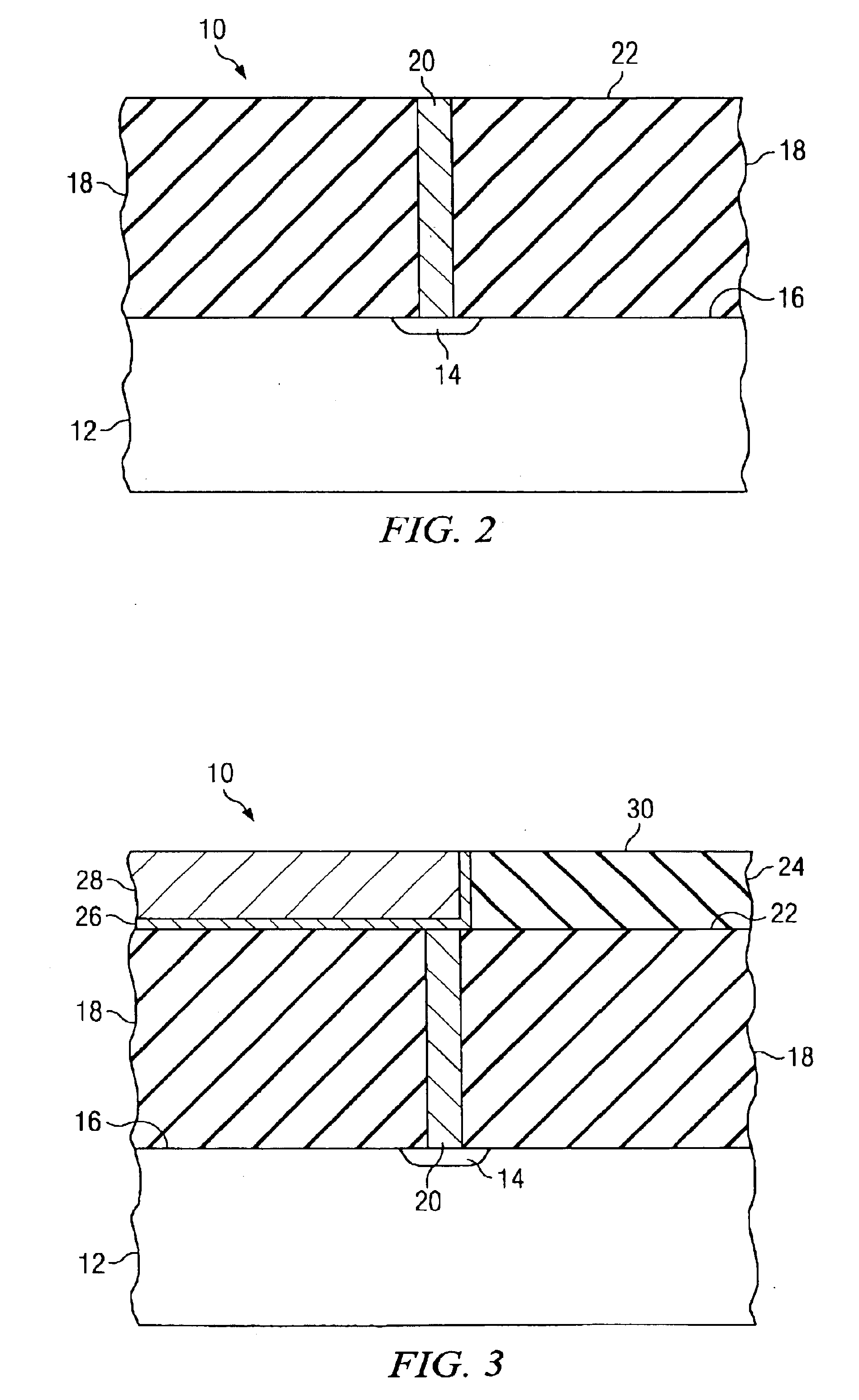Method to form selective cap layers on metal features with narrow spaces
a technology of metal features and selective cap layers, applied in the direction of liquid/solution decomposition chemical coatings, semiconductor/solid-state device details, coatings, etc., can solve the problems of insufficient thickness of cowp layers, and achieve the effects of reducing capacitive coupling, thermo-mechanical stress and thermal budget, and improving circuit performan
- Summary
- Abstract
- Description
- Claims
- Application Information
AI Technical Summary
Benefits of technology
Problems solved by technology
Method used
Image
Examples
Embodiment Construction
[0019]The making and using of the presently preferred embodiments are discussed in detail below. It should be appreciated, however, that the present invention provides many applicable inventive concepts that can be embodied in a wide variety of specific contexts. The specific embodiments discussed are merely illustrative of specific ways to make and use the invention, and do not limit the scope of the invention.
[0020]The present invention will be described with respect to preferred embodiments in a specific context, namely semiconductor devices having one or more metallization layers in which conductive lines are formed to form interconnects. Processes are described herein which bear on the elimination of an inorganic cap layer by recessing the surface of the copper conductors and vias to provide for a thicker, conducting diffusion barrier while still maintaining the overall thickness requirements for the metal / insulator stack. It is to be noted that the low-k dielectrics described ...
PUM
| Property | Measurement | Unit |
|---|---|---|
| dielectric constant | aaaaa | aaaaa |
| sizes | aaaaa | aaaaa |
| dielectric constant | aaaaa | aaaaa |
Abstract
Description
Claims
Application Information
 Login to View More
Login to View More - R&D
- Intellectual Property
- Life Sciences
- Materials
- Tech Scout
- Unparalleled Data Quality
- Higher Quality Content
- 60% Fewer Hallucinations
Browse by: Latest US Patents, China's latest patents, Technical Efficacy Thesaurus, Application Domain, Technology Topic, Popular Technical Reports.
© 2025 PatSnap. All rights reserved.Legal|Privacy policy|Modern Slavery Act Transparency Statement|Sitemap|About US| Contact US: help@patsnap.com



